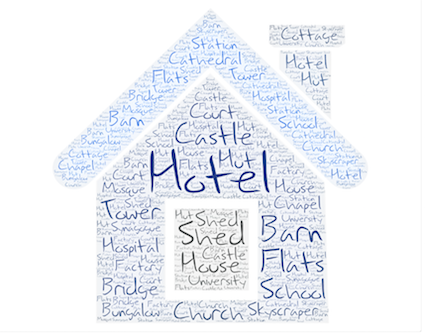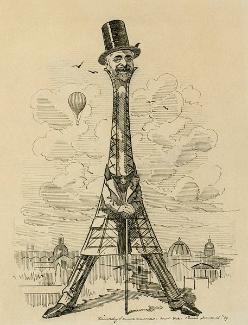Choose one of the following ways to help you get started with writing your poem or story!
1. Write a story about Liverpool in another time!
This drone footage of the Paddington Village development shows a huge site in the midst of a massive change:
But cities are always changing. Here’s a famous picture of Liverpool docks from over a hundred years ago:
Write a story about what it would be like to fly over Liverpool in 10 years, or a hundred years, or even a thousand years. What will you see or smell? What will you be able to hear in the background? Will the climate have changed – what will that do to the city? Will there be new buildings, new technologies and vehicles, strange wildlife, flooding? What will be the new ways of creating energy?
Or perhaps you want to write a poem where each verse jumps forward 50 years. Start on that rainy picture of the Victorian docks and then keep moving forward in time! What will you see or smell? What will you be able to hear in the background? Will the climate have changed – what will that do to the city? Will there be new buildings, new technologies and vehicles, strange wildlife, flooding? What will be the new ways of creating energy?
2. Write a poem from the perspective of a building!
Pick a building. It could be one of the buildings from the Knowledge Quarter Development or another modern or historic building in Liverpool. Or one you have made up!
Now imagine you are that building:
Ask yourself some questions like these:
- What are you made of?
- When were you built?
- What sort of people live or work inside you?
- Are you heated, do you have electricity running through your walls, what does that feel like? Where does this energy come from – maybe from solar panels on your roof, micro wind turbines, or tidal power?
- What stands around (or underneath) you – is this the present day, the past or the future? What kinds of life are there around you?
- How do you feel about your place in the city? Has your place changed since you were built, and how might it change in the future?
Ok! Now you are ready to start turning some of those ideas into a poem. After you have decided on the character of your building, try to write a poem that has this building tell its story. This could be what the building sees from where it stands, what it hears happening on different floors, the heat and energy that surges through its walls, or how things change across seasons or years.
We’ve done an example for you using THE SPINE in the knowledge quarter:
You could start your poem by introducing it, for example:
I am new, built of blue
glass, spotted like a giraffe
Then perhaps say where it stands:
I stand near the university,
bridging art and science, hope and history
underneath me lie tunnels packed with memories
After that maybe say who lives or works there:
Every day surgeons stream up my back-bone staircase
trying to help, to heal, to reveal
new cures
What it can see:
I can see the docks where people left for
new lives stateside,
the caverns where yesterday’s music plays after hard days
and nights
the Liver birds that flutter throughout
this port, that shaped the world, this pool of life
What it can hear:
cars and students and songs and squabbles
What it can feel....
....And so on. If you like you can do it as a piece of prose or a short story instead.
Your poem does not have to rhyme, but be as descriptive as you can and make sure your building says something different on each line.
3. Write an Acrostic
Choose one kind of building from the names in the picture below, or find one of your own.

Now you can start to create your own building poem. We've done an example using an old type of building. But why not try and new building that inspires you?
Step B
Write your building word down (vertically) and in capital letters like this:
C
A
S
T
L
E
Step C
On a separate piece of paper, write down building-related words that begin with these letters. You could even think about:
Parts of the building:
Walls, Roof, Rooms, Floor, Windows, Doors, Stairs, ceilings
The appearance, colour or texture of the building:
Smooth, Shiny, Rough, Ruddy, White, Rugged, Glassy, Towering, empty, lonely
The kind of personality it has:
Proud, shy, boastful, bossy, neighourly, sensible, playful, aggressive
The creatures, plants and animals that around it:
Pigeons, starlings, mice, beetles, ants, woodice, trees, flowers, bushes,
Step D
Fill in the lines with some words you have thought of
Ceilings
Aggressive
Starlings
Towering
Lonely
Empty
Your poem might end up something like this:
Ceilings made from the ground’s fierce rock
Aggressive battlements hewn into the hills,
Starlings on this ruin now stand guard over sodden fields
Towering once, the ruined castle falls slowly back to its land –
Lonley, its tired stones sleep under grass and
Empties its arrowslits into sky.
4. Imagine what it’ll be like to live or work in the new development.
Here’s a video showing us what the new site at Paddington village will be like:
Write a short story set in the new knowledge quarter just after it has been finished in a few years’ time. Do you work there? Are you studying at the university? Are you meeting your friends out on the green spaces? Do you feel welcome there? Are there particular shops or activities or events that you’d like to see? Have you been exploring in the underground world of the Williamson Tunnels?
5. Try Writing A Haiku
Write a haiku poem about building. A haiku consists of 3 lines. The first and third lines have 5 syllables, the second line has 7 syllables. Here’s an example:
My walls going up
in the air, eco-friendly
I must be, I care
Once you have written a few haikus put them together into a single poem!
6. Have you ever thought about how hard it is to be an architect?
Read about the strange case of the 'death ray skyscraper' here.
After reading try and write a story that either:
a) is from the perspective of an architect who has just discovered that the way they have designed the building has had some unintended consequences OR
b) tells us your idea for a building that harnesses the powers of nature in new ways.
Looking for more ideas?
You might want to read some of our favourite poems about buildings and architecture to give you some inspiration:
Elizabeth Bishop, Filling Station
Basil Bunting, At Briggflatts Meeting House
Emily Dickinson, The Props Assist The House
Philip Larkin, The Building
Matt Rasmussen, Skyscraper
Jonathan Swift, Vanbrugh’s House
William Wordsworth, Composed upon Westminster Bridge
If you have any favourite poems about buildings we'd love to hear from you! Send us an email at writingcomp@liverpool.ac.uk
Image of Liverpool Quay By Moonlight Photo (c) Tate, Creative Commons CC-BY-NC-ND (3.0 Unported)
Image of Gustave Eiffel is available from the United States Library of Congress's Prints and Photographs division
under the digital ID ppmsca.02294.
-529x354.jpg)
